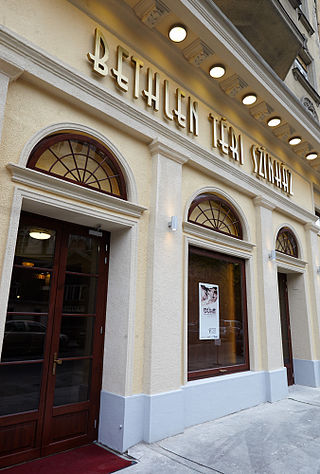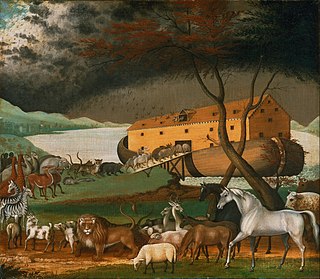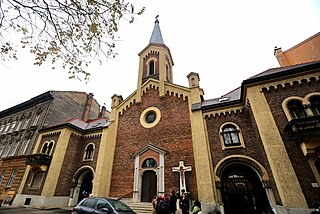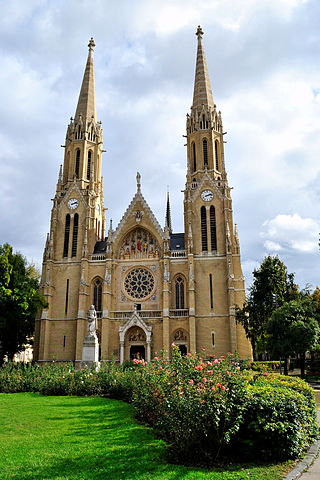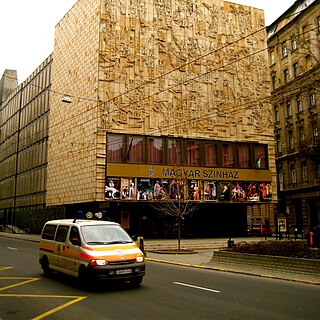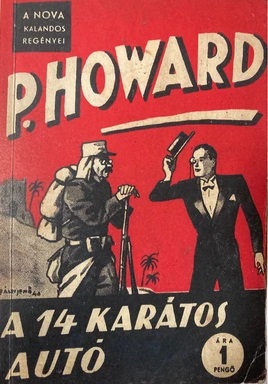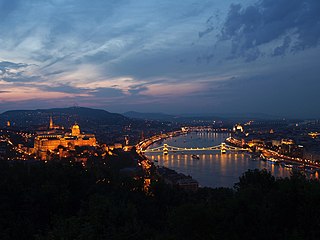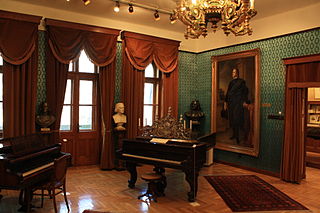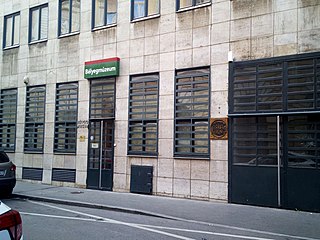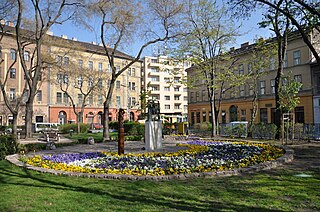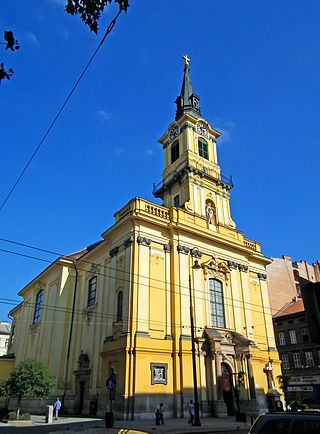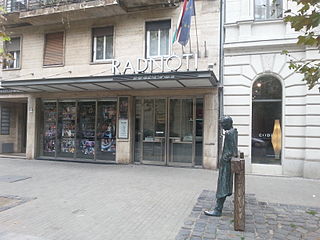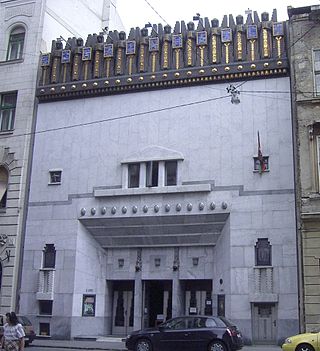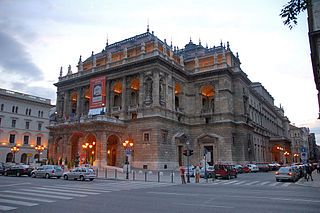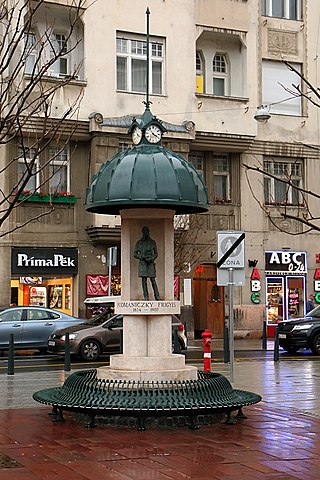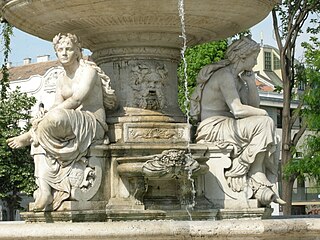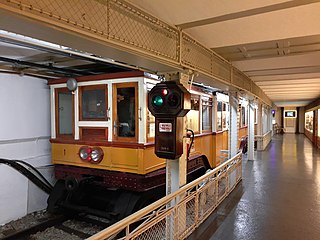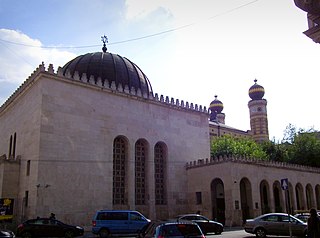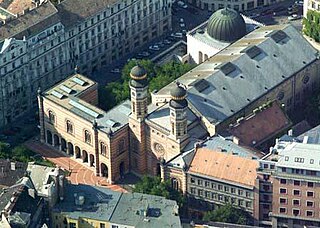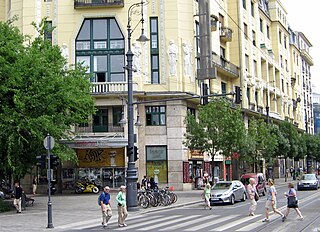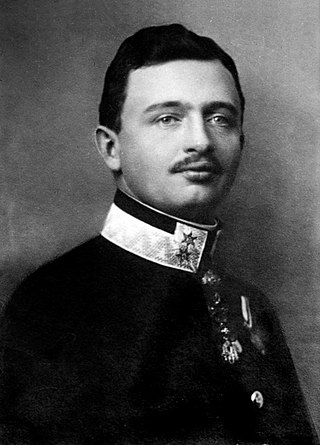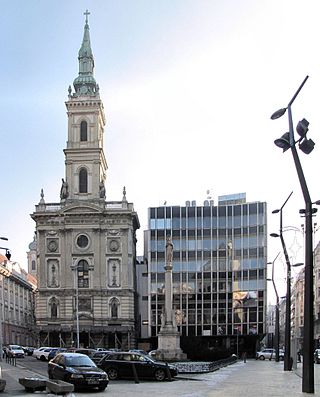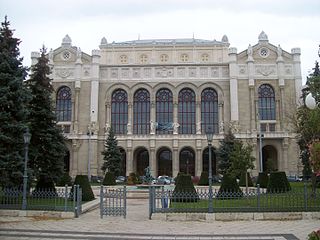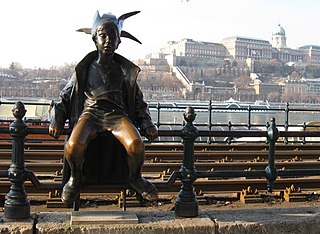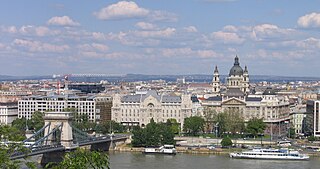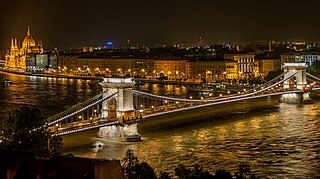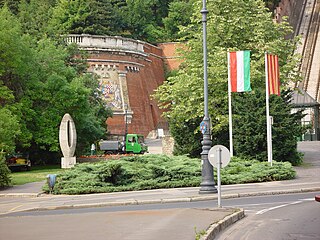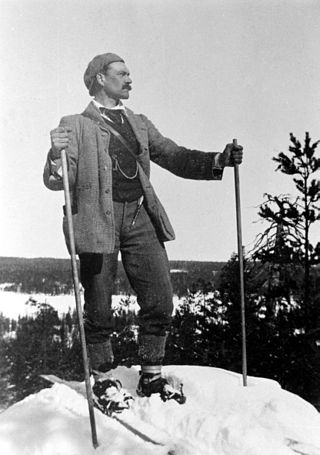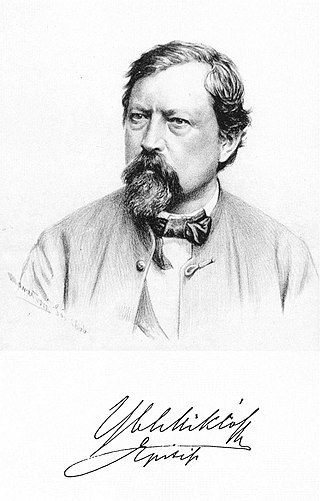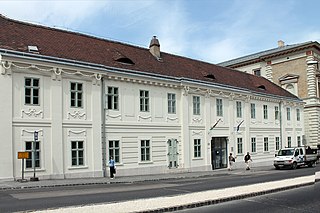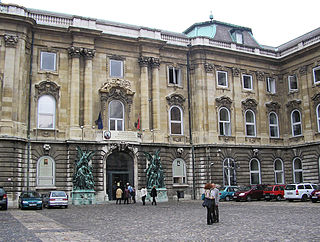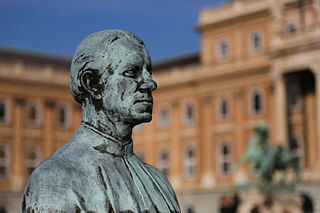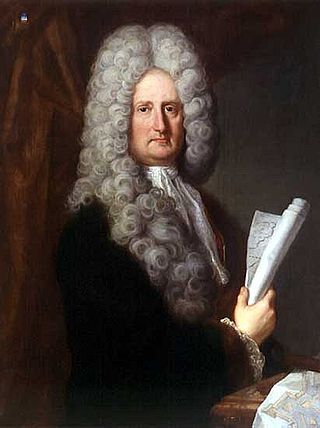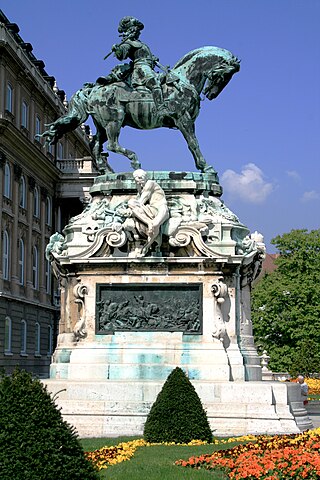Self-guided Sightseeing Tour #10 in Budapest, Hungary
Legend
Guided Free Walking Tours
Book free guided walking tours in Budapest.
Guided Sightseeing Tours
Book guided sightseeing tours and activities in Budapest.
Tour Facts
12.6 km
335 m
Experience Budapest in Hungary in a whole new way with our self-guided sightseeing tour. This site not only offers you practical information and insider tips, but also a rich variety of activities and sights you shouldn't miss. Whether you love art and culture, want to explore historical sites or simply want to experience the vibrant atmosphere of a lively city - you'll find everything you need for your personal adventure here.
Activities in BudapestIndividual Sights in BudapestSight 1: Róth Miksa Emlékház és Gyűjtemény
The Miksa Róth Memorial House and Collection is located in the buildings of the residence and creative workshop of the outstanding artist of Hungarian glass painting and mosaic art between 1911 and 1944.
Sight 2: Bethlen Téri Színház
The Bethlen Square Theatre has been operating as an inclusive and production theatre since January 2012. The mission of the theatre is to be a prominent inclusive theatre institution of domestic and occasionally international contemporary performing arts in Budapest, keeping in mind the interests and needs of Erzsébetváros and its immediate surroundings, Outer Erzsébetváros. Its aim is to saturate the place with new life, involving young artists active in the fields of creative art, without restrictions on genres.
Sight 3: Noah's Ark
Noah's Ark is the boat in the Genesis flood narrative through which God spares Noah, his family, and examples of all the world's animals from a global deluge. The story in Genesis is based on earlier flood myths originating in Mesopotamia, and is repeated, with variations, in the Quran, where the Ark appears as Safinat Nūḥ and al-fulk. The myth of the global flood that destroys all life begins to appear in the Old Babylonian Empire period. The version closest to the biblical story of Noah, as well as its most likely source, is that of Utnapishtim in the Epic of Gilgamesh.
Wikipedia: Noah's Ark (EN), Url Kozterkep, Facebook, Website
Sight 4: Istenszülő Oltalma templom
The Church of the Protection of the Mother of God, colloquially known as the Greek Catholic Church of Rózsa Square – to be distinguished from the large Roman Catholic church in its immediate vicinity – is a former Roman Catholic, today Greek Catholic church and parish located in the VII. district of Budapest.
Wikipedia: Istenszülő oltalma templom (Rózsák tere) (HU), Url Miserend
Sight 5: Rózsák tere
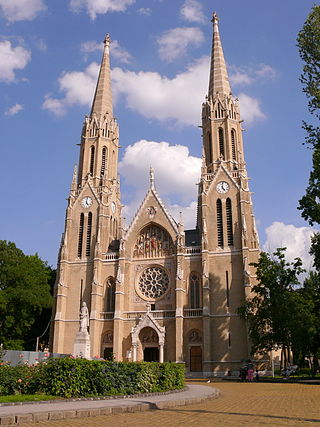
Rózsák Square is located in the VII. district of Budapest, in Erzsébetváros, near Rottenbiller Street, in the area between Dohany Street and Rákóczi Road.
Sight 6: Árpád-házi Szent Erzsébet-templom
St. Elisabeth Parish Church of Árpád House, also known as the Parish Church of Erzsébetváros, is located in Budapest VII. district, in Erzsébetváros, near Rákóczi Road, on Rózsák Square. The building was built between 1895 and 1901 according to the neo-gothic plans of Imre Steindl, and in terms of its size it is the second largest church and one of the most significant sights of the district. It was named after Saint Elizabeth of the House of Árpád.
Wikipedia: Árpád-házi Szent Erzsébet-plébániatemplom (Erzsébetváros) (HU), Website, Url Miserend
Sight 7: Magyar Színház
The Magyar Theatre is a theatre operating in Budapest, Hungary. Its company started on August 22, 1837 as the first major Hungarian-language theatrical company in the city. They operated under this label until August 8, 1840, when the name was changed to National Theatre of Hungary. Switching homes two times, the company moved to its current building in 1966. The name Magyar Theatre was restored on September 1, 2000, with the opening of the new National Theatre.
Sight 8: The Fourteen Carat Car
The fourteen-carat car is a humorous novel by Jenő Hidő, published in 1940. Based on the book, György Magos made an audiobook in 2006 performed by Péter Rudolf, which was published by Kossuth Publishing House. In addition, Pál Korcsmáros – like several of Hidő's other famous novels – adapted them into comics. In 2019, it was also published as a publication of POKET Pocketbooks.
Wikipedia: A tizennégy karátos autó (HU), Url Kozterkep, Facebook, Website
Sight 9: Andrássy Avenue and the Underground
Budapest World Heritage sites are the view of the Danube bank, the Buda Castle District and Andrássy Avenue.
Sight 10: Liszt Ferenc Emlékmúzeum és Kutatóközpont
The Franz Liszt Museum is located in Budapest, Hungary, inside a Renaissance corner house, designed by Adolf Lang in 1877. Above the windows on the second floor are bas-reliefs by famous composers, such as Bach, Mozart, Hadyn, Erkel, Beethoven and Liszt himself.
Sight 11: Bélyegmúzeum
The Budapest Stamp Museum is one of Europe's largest public collections dealing with stamp history and philately. It has been operating as an independent museum since 1930.
Sight 12: Fészek Artists’ Club
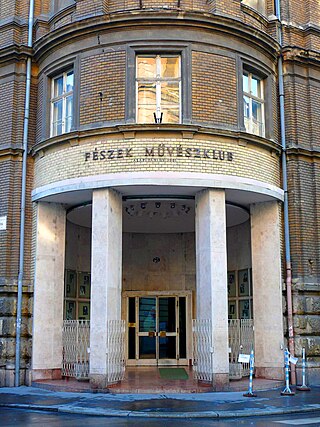
The Fészek Art Club is a club of the Budapest art world founded in 1901, today it is a non-profit, nationwide association where literary, musical, theatre, film and fine arts events are held that can be visited by anyone. For informal social life, a restaurant and a restaurant-wine bar are also at guests' disposal.
Sight 13: Klauzál tér
The Klauzál tér was the largest square in the former Jewish quarter of Budapest, Hungary. Located in the seventh district, it was the heart of the city's old Jewish quarter. Nowadays, this area is also known as the party district in Hungarian bulinegyed, because of its many pubs nearby.
Sight 14: Sász-Chevra Zsinagóga
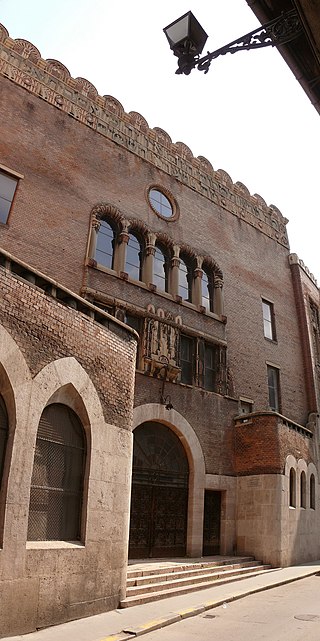
The Kazinczy Street Synagogue, variously called the Sasz-Chevra Synagogue and the Great Orthodox Synagogue is an Orthodox Jewish congregation and synagogue complex, located at 29–31 Kazinczy Street, in Pest, in the VII district of Budapest, Hungary. The congregation worships in the Ashkenazi rite.
Sight 15: Church of Saint Theresa of Avila
The Parish Church of St. Theresa the Great of Avila, also known as the parish church of Terézváros, is located in Budapest in Terézváros, on the same plot as the Conservatory. The property is undivided and jointly owned, owned by the Archdiocese of Esztergom-Budapest on the ecclesiastical side. According to Act LIV of 1997, the church is classified as a category II monument under trunk number 15,526. It is the largest church in district VI, with a tower height of 65 meters.
Wikipedia: Ávilai Nagy Szent Teréz-plébániatemplom (HU), Url Miserend
Sight 16: Keres Emil Próbaterem
The Radnóti Miklós Theatre is one of the theatres of Budapest.
Sight 17: Újszínház
The New Theatre, named New Theatre since 2012, is one of the Budapest theatres of the New Theatre, located on Paulay Ede Street. From 1961 it operated as a children's and youth theatre, then in 1994 it was renewed both in profile and name under the leadership of Gábor Székely. Stone theatre maintained by the capital.
Sight 18: Hungarian State Opera House
The Hungarian State Opera House is a historic opera house located in central Budapest, on Andrássy avenue. Originally known as the Hungarian Royal Opera House, it was designed by Miklós Ybl, a major figure of 19th-century Hungarian architecture. Construction began in 1875, funded by the city of Budapest and by Emperor Franz Joseph I of Austria-Hungary, and the new house opened to the public on the 27 September 1884. Before the closure of the "Népszínház" in Budapest, it was the third largest opera building in the city; today it is the second largest opera house in Budapest and in Hungary.
Sight 19: Podmaniczky Frigyes
The Frigyes Podmaniczky memorial is the work of Pál Kő and Gyula Balikó, inaugurated in 1991 in Podmaniczky Frigyes Square.
Sight 20: St. Stephen's Basilica

St. Stephen's Basilica is a Roman Catholic basilica in Budapest, Hungary. It is named in honour of Stephen, the first King of Hungary, whose right hand is housed in the reliquary.
Wikipedia: St. Stephen's Basilica (EN), Website, Url Miserend
Sight 21: Erzsébet Square
In the V. district of Erzsébet Square Budapest. It is bordered by Vienna Street, József Attila Street, Bajcsy-Zsilinszky Street and Thirty ad Street. This is the largest green space in downtown Pest.
Sight 22: Deák téri evangélikus templom
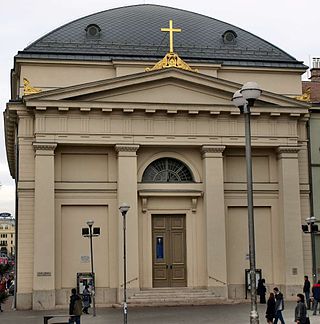
The Lutheran Church on Deák Square is Budapest oldest and best-known Lutheran church, a classicist-style hall church without a tower on Deák Ferenc Square in Budapest. The largest Protestant church in Budapest. Many other Lutheran institutions operate in the block formed together with the adjoining buildings, which is why the area is often called Insula Lutherana.
Sight 23: Underground Railway Museum
The Underground Railway Museum, also known as the Millennium Underground Museum, is a museum located under Deák Ferenc square in the centre of the Hungarian capital city of Budapest. It is accessible from the pedestrian subway system that links the square to Deák Ferenc tér metro station and is housed in a tunnel that once carried the tracks of line M1 of the Budapest Metro.
Wikipedia: Underground Railway Museum (Budapest) (EN), Website, Facebook
Sight 24: Rumbach utcai zsinagóga
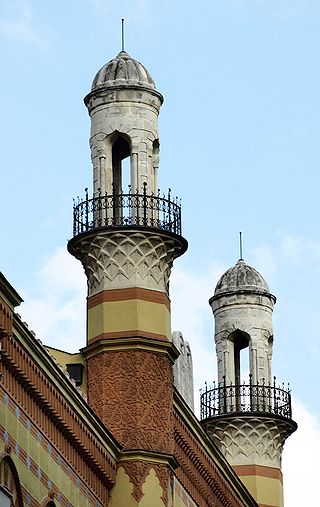
The Rumbach Street Synagogue, also called the Status Quo Ante Synagogue, is a Neológ congregation and synagogue, located in Belváros, the inner city of the historical old town of Pest, in the eastern section of Budapest, Hungary. Since 2021, the building has also been used as a concert hall and Jewish museum.
Sight 25: Hősök zsinagógája
The Temple of Heroes or Synagogue of Heroes is a Jewish religious building located in the courtyard of the Dohany Street Synagogue. Today it is an inseparable part of the building complex.
Sight 26: Hungarian Jewish Museum and Archives
The Hungarian Jewish Museum is a thematic museum located in the museum wing next to the Dohany Street Synagogue building, which presents artifacts of Hungarian Jewish culture and history. It is owned and managed by MAZSIHISZ, one of Central Europe's outstanding Judaica collections.
Sight 27: Dohány Street Synagogue
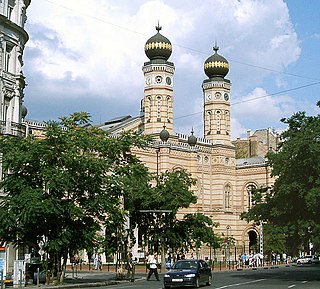
The Dohány Street Synagogue, also known as the Great Synagogue or Tabakgasse Synagogue, is a Neolog Jewish congregation and synagogue, located on Dohány Street in Erzsébetváros of Budapest, Hungary. It is the largest synagogue in Europe, seating 3,000 people, and is a centre of Neolog Judaism. The congregation worships in the Ashkenazi rite.
Sight 28: Belvárosi Színház
It is one of the Budapest inclusive theatres of the Downtown Theatre, located on Károly boulevard, which opened its doors in 2004. Apart from his name, he has no connection with Artúr Bárdos's company operating under this name between 1917 and 1951.
Sight 29: IV. Károly király
Charles I was Emperor of Austria, King of Hungary, and the ruler of the other states of the Habsburg monarchy from November 1916 until the monarchy was abolished in April 1919. He was the last of the monarchs belonging to the House of Habsburg-Lorraine to rule over Austria-Hungary. The son of Archduke Otto of Austria and Princess Maria Josepha of Saxony, Charles became heir presumptive of Emperor Franz Joseph when his uncle Archduke Franz Ferdinand of Austria was assassinated in 1914. In 1911, he married Princess Zita of Bourbon-Parma. He is venerated in the Catholic Church, was beatified by Pope John Paul II on 3 October 2004, and is known to the Catholic Church as Blessed Karl of Austria.
Sight 30: Belvárosi Szent Anna-plébániatemplom
The St. Anne's Church in the City Centre, also known as Servita Church, is located in Budapest, in the city center, on Szervita Square. Until the end of World War II, it operated under the administration of the Servite order, today it belongs to the Downtown Assumption Parish. The church is a category I monument under Act LIV of 1997 under trunk number 15394.
Wikipedia: Belvárosi Szent Anna-plébániatemplom (HU), Url Miserend
Sight 31: Haláruslány kút
The Fishmonger's Girl Fountain is one of Budapest's public sculptures, a classicist drinking fountain. It was made in 1862 by the sculptor László Dunaiszky and the builder by Mátyás Gottgéb. It is located on Kristóf Square in District V.
Sight 32: Vigadó Galéria
Vigadó Gallery
Sight 33: Pesti Vigadó
Vigadó is Budapest's second largest concert hall, located on the Eastern bank of the Danube in Budapest, Hungary.
Sight 34: Little Princess
The original 50 cm statuette of the Little Princess (Kiskirálylány) Statue sitting on the railings of the Danube promenade in Budapest, Hungary was created by László Marton (1925–2008) Munkácsy- and Kossuth Prize-winning sculptor in 1972.
Sight 35: Kossuth Lajos Múzeumhajó
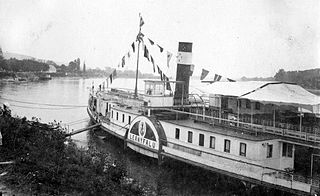
The Kossuth, originally known as Ferdinand Ferencz, is a Hungarian paddle-wheel steamship built in 1913, one of the few such vehicles preserved for posterity. Currently, it is moored in Budapest as the Kossuth Museum Ship, as an extremely important artefact and exhibition space of the Museum of Transport, and at the same time a restaurant operates on it.
Sight 36: Széchenyi István tér
Széchenyi István Square is located in the V district of Budapest, at the Pest foot of the Chain Bridge, and is part of the World Heritage Site on the banks of the Danube.
Sight 37: Széchenyi Chain Bridge
The Széchenyi Chain Bridge is a chain bridge that spans the River Danube between Buda and Pest, the western and eastern sides of Budapest, the capital of Hungary. Designed by English engineer William Tierney Clark and built by Scottish engineer Adam Clark, it was the first permanent bridge across the Danube in Hungary. It was opened in 1849. It is anchored on the Pest side of the river to Széchenyi Square, adjacent to the Gresham Palace and the Hungarian Academy of Sciences, and on the Buda side to Adam Clark Square, near the Zero Kilometre Stone and the lower end of the Castle Hill Funicular, leading to Buda Castle.
Sight 38: Zero Kilometre Stone
The Zero Kilometre Stone is a 3 m high limestone sculpture in Budapest that represents Kilometre Zero in Hungary. It consists of a zero sign, with an inscription on its pedestal reading "KM" for kilometres. It was initially located at the threshold of Buda Royal Palace, but was moved to its present location by Széchenyi Chain Bridge when the crossing was completed in 1849.
Sight 39: Akseli Gallen-Kallela
Akseli Gallen-Kallela was a Finnish painter who is best known for his illustrations of the Kalevala, the Finnish national epic. His work is considered a very important aspect of the Finnish national identity. He finnicized his name from Gallén to Gallen-Kallela in 1907.
Sight 40: Ybl Miklós
Miklós György Ignác Knight Ybl was a Hungarian architect, one of the greatest Hungarian masters of the 19th century, a representative of historicism of European importance. His best-known works are the Hungarian State Opera House in Budapest, the Main Customs House, the Castle Garden Bazaar, St. Stephen's Basilica or the Immaculate Conception Church (Fót).
Sight 41: Semmelweis Orvostörténeti Múzeum, Könyvtár és Levéltár
The Semmelweis Museum, Library and Archive of the History of Medicine is a museum, library and archive in Budapest, Hungary. It was founded in 1965, and became a department of the Hungarian National Museum in 2017. The museum is located in the 18th-century house where Ignaz Semmelweis was born in 1818. The exhibition covers the development of healthcare in Hungary and the main stages in the history of medicine in Europe.
Wikipedia: Semmelweis Museum of Medical History (EN), Website
Sight 42: Budapest History Museum
The Budapest History Museum is one of Budapest most important museums, collecting documents and artifacts from the history of the capital. It is a municipal institution, but according to its official classification it is a national museum. Its headquarters are located in Budapest at I., Szent György tér 2.
Wikipedia: Budapesti Történeti Múzeum (HU), Website, Facebook
Sight 43: Antonio Bonfini
Antonio Bonfini (1427‒1502) was an Italian humanist and poet serving as a court historian in Hungary under King Matthias Corvinus during the last years of his career.
Sight 44: Luigi Ferdinando Marsigli
Count Luigi Ferdinando Marsili was an Italian scholar and natural scientist, who also served as an emissary and soldier.
Sight 45: Prince Eugene of Savoy
The statue of Eugene of Savoy stands on the longitudinal side of the Buda Castle Palace facing Pest, on the Savoy Terrace, in front of the main entrance of the Hungarian National Gallery. The equestrian statue was erected in its present location in 1900.
Sight 46: Hungarian National Gallery
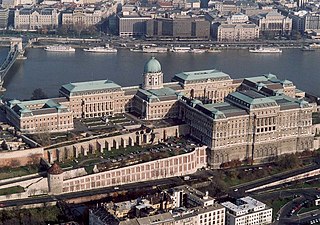
The Hungarian National Gallery, was established in 1957 as the national art museum. It is located in Buda Castle in Budapest, Hungary. Its collections cover Hungarian art in all genres, including the works of many nineteenth- and twentieth-century Hungarian artists who worked in Paris and other locations in the West. The primary museum for international art in Budapest is the Museum of Fine Arts.
Wikipedia: Hungarian National Gallery (EN), Website, Facebook
Sight 47: Turul
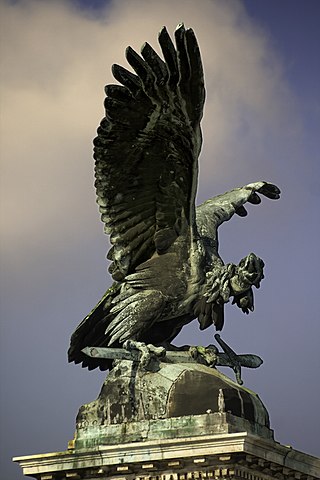
The Turul is a mythological bird of prey, mostly depicted as a falcon, in Hungarian tradition and Turkic tradition, and a national symbol of Hungarians.
Share
Disclaimer Please be aware of your surroundings and do not enter private property. We are not liable for any damages that occur during the tours.
GPX-Download For navigation apps and GPS devices you can download the tour as a GPX file.

